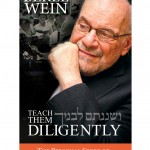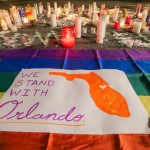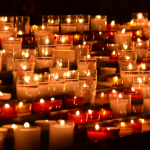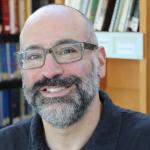The first synagogue to take root in North America more than 350 years ago was Congregation Shearith Israel. This community of Sephardic Jews hailing from the Spanish-Portuguese community came with their deeply held beliefs of how the world works, how communities are formed and how they are maintained and began to earnestly set out to repeat that pattern on the shores of the Atlantic. Yet, something was very different here than it was in any other context that the Jews had lived in before. The explicit religious pluralism and religious freedom (including a freedom from religion) that began to coalesce and form in that second half of the 17th century presented a significant new reality. What were the tools within the communal tool belt to enforce conformity: Excommunication? Denial of synagogue honors? What use were they in this new world? Excommunicate me! I’ll just blend into the larger society. Deny me synagogue honors? I’ll create my own synagogue!
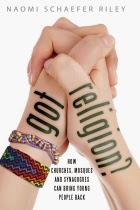 Therefore, the challenges presented in the new book by Naomi Schaefer Riley Got Religion? How Churches, Mosques and Synagogues Can Bring Young People Back (2014, Templeton Press) are far from new. The particulars of our generation may be different and indeed the level of religious freedom, both freedom of religion and freedom from religion, is markedly more pronounced in the beginning of the 21st century than it was in any other era of the American story. Yet, the challenges of community cohesion, transmission to the next generation and relevancy in a changing world have been with us since those first Jewish colonists arrived in New Amsterdam in the 1600s.
Therefore, the challenges presented in the new book by Naomi Schaefer Riley Got Religion? How Churches, Mosques and Synagogues Can Bring Young People Back (2014, Templeton Press) are far from new. The particulars of our generation may be different and indeed the level of religious freedom, both freedom of religion and freedom from religion, is markedly more pronounced in the beginning of the 21st century than it was in any other era of the American story. Yet, the challenges of community cohesion, transmission to the next generation and relevancy in a changing world have been with us since those first Jewish colonists arrived in New Amsterdam in the 1600s.
In every book offering a diagnosis and cure for the problems impacting religion in the author’s era, one can discover a great deal about the biases that guide the author. Furthermore, it is within those biases that one can glimpse the fault lines that run through religious discourse. Some sixty years ago the sociologist Will Herberg published the now famous work Protestant, Catholic, Jew in which he argued that eventually we will observe the shedding of the ethnic particularities that define so much of the religious experience of these three religious groups and what would emerge would be three grand categories of universal religious faith with only the slightest of differences between them. The immigrant generation will pass away and their children and grandchildren will leave behind their “old world” customs, whether they be from Russia, Ireland or Germany.
Herberg was a religious conservative who viewed the civil rights movement with suspicion for its breaking up the fabric of American society. The American public square was an ideal and the highlighting of difference, whether it be religious orthodoxy or noting the wholesale oppression and disenfranchisement of the black community, was a barrier to that ideal American community. The entire thesis of Herberg’s book has been brought into question numerous times by social scientists since it was published. His complete dismissal of other communities in America at the time, including the African-American community, was more than an oversight as it reflected deeply held racial prejudices of the 1950s. It is thus a surprise that Schaefer Riley makes reference to Herberg’s work (pg. 44) as she seeks to demonstrate that only by shedding ethnic particularities will religion in America survive.
 In making this argument she continues a thread of thought that has been present for many decades, if not since the founding of this country, that the only way to truly succeed as a faith in America is to embrace fully the “American way of life” and to abandon all that which gets in the way. She includes differences such as a unique ritual language (Arabic or Hebrew), ritual clothing (a Hijab or a Kippah), maintaining any gender distinctions (separate prayer spaces or different modalities of religious leadership) and a host of other items. As she opines, “There has always been a temptation for immigrants to want to keep their religious traditions, but in an era when young adults are moving away from affiliation with religious institutions anyway, it is all the more important that those institutions find a way to adapt to this country by grounding themselves in American traditions. (pgs. 52-53)”
In making this argument she continues a thread of thought that has been present for many decades, if not since the founding of this country, that the only way to truly succeed as a faith in America is to embrace fully the “American way of life” and to abandon all that which gets in the way. She includes differences such as a unique ritual language (Arabic or Hebrew), ritual clothing (a Hijab or a Kippah), maintaining any gender distinctions (separate prayer spaces or different modalities of religious leadership) and a host of other items. As she opines, “There has always been a temptation for immigrants to want to keep their religious traditions, but in an era when young adults are moving away from affiliation with religious institutions anyway, it is all the more important that those institutions find a way to adapt to this country by grounding themselves in American traditions. (pgs. 52-53)”
The privileging of “American traditions” is a form of cultural supremacy. After all, what are American traditions? Consumerism? Hot dogs? Starbucks coffee? I would argue that American tradition, at its finest, is the embrace of a plethora of uniqueness under an umbrella of respect and mutual benefit. As George Washington wrote to the Hebrew Congregation in Newport, Rhode Island in 1790: “every one shall sit in safety under his own vine and fig tree, and there shall be none to make him afraid.” That is the American tradition that I so greatly admire and what makes me so proud to be an American and I know I am not alone.
Robert Putnam at Harvard tapped into these two competing stories in our contemporary experience in American Grace (2012, Simon and Schuster). He demonstrates through exhaustive research that we are seeing a swelling of the ranks of religious communities and a huge rush of people out of religious communities. What have we lost in this opposing process? The ability to speak to each other. Schaefer Riley’s book is an example of talking past each other and not to each other; of ignoring one part of the dynamic in the country while focusing only on the one we more closely identify with. She offers solutions to a population who already have embraced the suggestions she makes: Remove Hebrew from the liturgy? Not a problem for the unaffiliated young adult community. Drop particular religious clothing? Check. Embrace some vague notion of American traditions? Done.
What is sorely lacking is a guidebook to dialogue between these two groupings: the churched and the unchurched. What is sorely lacking is a guidebook to teach the marginally affiliated and unaffiliated how to integrate more of the richness of their heritage and to teach the deeply affiliated how to express pluralistic values rooted in profoundly held faith convictions. What we need is a how-to book of opening up the faithful to truly living in a multi-faith and multi-cultural society without resorting to self-imposed ghettos and a how-to book for the unfaithful of thinking beyond contemporary popular culture and how to contemplate eternity. This is the challenge for our day and for our time. This is a challenge deeply rooted in the American experience of religious freedom that was first observed by the Jewish colonists more than 350 years ago and one we have yet to fully and truly respond to.

